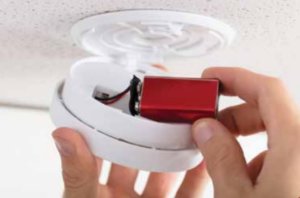 It’s incumbent upon homeowners to ensure that fire safety is top-of-mind at all times. An all-encompassing approach should include steps for preventing, detecting, extinguishing and escaping potential fires. Prevention entails careful monitoring of any ignition procedure, whether it’s in the kitchen, utility room, workshop or garage, and ensuring that any active flame (or burning cigarette) is never left unattended. As well, prevention should include making fire-safe decisions when buying renovation materials, appliances, drapery, upholstery and mattresses.
It’s incumbent upon homeowners to ensure that fire safety is top-of-mind at all times. An all-encompassing approach should include steps for preventing, detecting, extinguishing and escaping potential fires. Prevention entails careful monitoring of any ignition procedure, whether it’s in the kitchen, utility room, workshop or garage, and ensuring that any active flame (or burning cigarette) is never left unattended. As well, prevention should include making fire-safe decisions when buying renovation materials, appliances, drapery, upholstery and mattresses.
As for detection, there are various types of alarms to consider. Be mindful that all battery-operated alarms should have their batteries replaced twice a year. Fire extinguishers, of course, can limit costly damage and prevent a small fire from getting out of control. Strategically place a fire extinguisher in key locations throughout your house. Be sure each extinguisher is designed for the type of fire it is designed to extinguish (i.e. A, B or C grade fires). As with all safety equipment, check that operational dates are not expired. If you’re ever unsure, invest in a new one.
Finally, every household member needs to know multiple exit paths in case of fire, especially from above or below the entrance level or ground floor. Be sure to designate a safe meeting area as part of your escape plan, and have a fire drill and/or conversation about it once a year.
